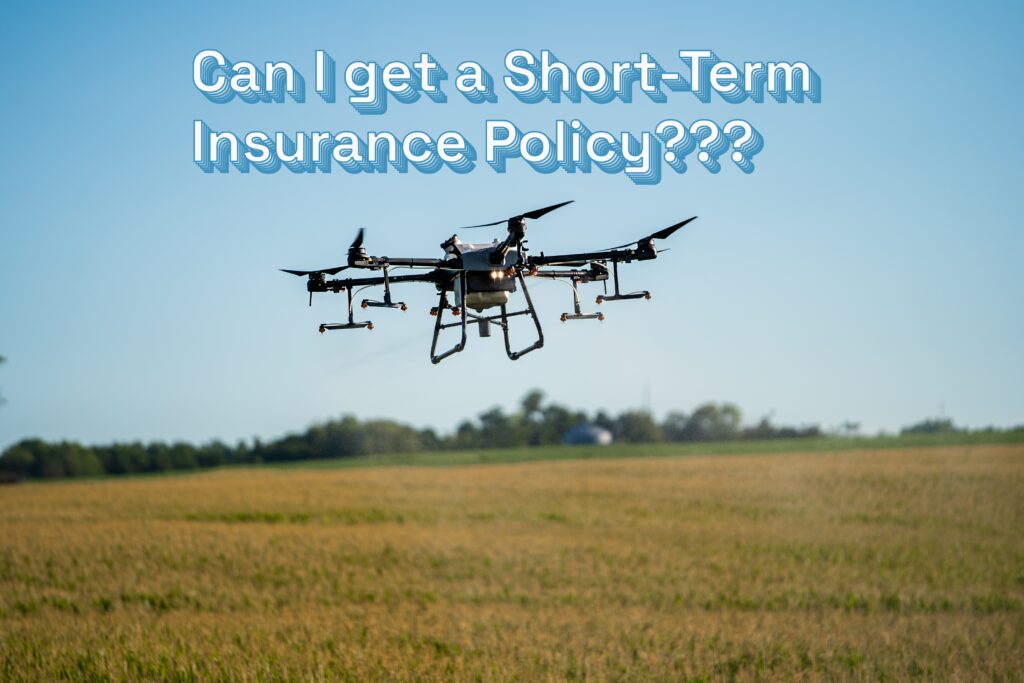One of the biggest questions we get this time of year is “Can I only get a 6 month insurance policy instead of a full 12 month policy?” The answer is not as easy as you’d think when you compare to your home, farm, and auto policies. Let’s dive in and explore why that’s the case!
Key Facts & Insights: First off, let’s clarify what aerial application insurance is. This is an insurance coverage that protects your drone from any physical damage, along with any chemical drift liability that might arise. Furthermore, it is your proof of financial responsibility for your state’s department of Agricultural proving that you have protection in case you have an over spray drift complaint.
Here are some key facts you need to know:
- Underwriters are “for-profit” companies: Insurance is a necessary part of the industry and having profitable insurance companies is important to maintaining lower premiums and having more options in the market. Underwriters have to find the delicate balance of making money while also being cheaper than their competitors. This is done by basing their rates on their loss ratios of previous years. Each line of business has different loss ratios and aerial application tends to be one of the riskier lines for most companies. VT Insurance plays a vital roll in keeping markets healthy while also driving down the prices for the end-user applicators!
- Aerial Application Insurance is Seasonal Business: If you know this, then the underwriters know this as well. When initially writing insurance policies for crop dusters back in the 1950’s and 1960’s, underwriters would have to process mid-term cancellations due to aerial applicators cancelling their policies and getting a pro-rata return of their premium. This meant that the underwriters did not get their expected premiums from their carefully calculated loss ratios.
- Creation of the “Ag Short Rate”: To make sure the underwriters were getting a minimum amount of premium for the risk they were insuring, the insurance companies came up with the Ag Short Rate. Most companies will fully earn their premium in 30 day intervals with a specific percentage fully earned after so many days in place. (See example in next section)
- Regulatory Compliance: Most states will require you carry proof of insurance to maintain your pesticide license in that state. If you were to let your coverage expire, you may become uncompliant in the state you are trying to spray in.
What is the Ag Short Rate Table?
- The Ag Short Rate Table: This is slightly different from carrier to carrier but most base their fully earned percentages on a 120 day period. Here is an example of one of our more popular insurance companies:
- If the Named insured cancels their policy or requests substitution, addition or deletion of aircraft and/or alteration of coverage, the minimum earned premium shall be computed according to the following schedule:
- Less than 31 days inforce – 25% of the annual premium
- Between 31 days and 61 days inforce – 50% of the annual premium
- Between 61 days and 91 days inforce – 75% of the annual premium
- Between 91 days and 120 day inforce – 85% of the annual premium
- 120 days or more inforce – 100% of annual premium
- If the Named insured cancels their policy or requests substitution, addition or deletion of aircraft and/or alteration of coverage, the minimum earned premium shall be computed according to the following schedule:
Can I get a short-term policy in place?: The short answer to this question is… it depends. As an applicator, you have to be smart about your insurance coverage and make sure that getting a short-term policy is the right decision for you. If your spray season is 1 – 2 months long, it might be in your best interest to start a policy on a specific day to cancel on a specific day in the future. You should be upfront about your plans with your insurance broker so that they can get you set up to save the most money possible. If your season is 4 – 6 months long or you are operating in a state that requires you have active chemical insurance to maintain your pesticide license, then it would be best long-term to keep the 12 month policy in place.
Pro Tips & Best Practices:
- Work with an Expert: Talk to someone like us at VT Insurance Agency—we specialize in aerial application insurance and can help tailor a short-term policy that fits your specific needs.
- Know your states requirements: Know if your state requires proof of insurance to maintain your pesticide license and what those limits are.
- Stay Updated: Regulations are changing at a rapid pace. Make sure you’re informed about any new laws or policies that may affect your coverage.
- Test Flights: Always conduct test flights before diving into actual aerial applications. It’s a lot easier to fix flight problems when you’re just up there for fun rather than spraying herbicides!
Conclusion & CTA: So, there you have it! Short-terms policies can be accessible but it may not be the best option for you and your operation. Make sure you know all the facts of your policy before binding coverage.
Want to get started with your aerial application insurance? Give us a call at VT Insurance Agency! Let’s chat about how we can help keep your drone business flying high while ensuring you have the coverage you need. After all, safety first, fun second—right? Don’t wait until the next crop-dusting season; let’s get you covered today!
#Shorttermpolicy #Drone #Droneinsurance #aerialapplication #sprayinsurance


